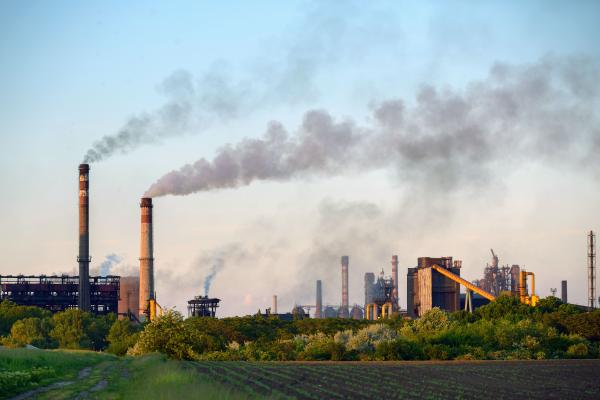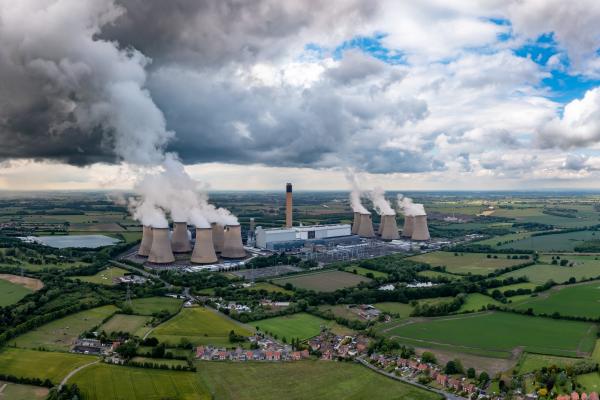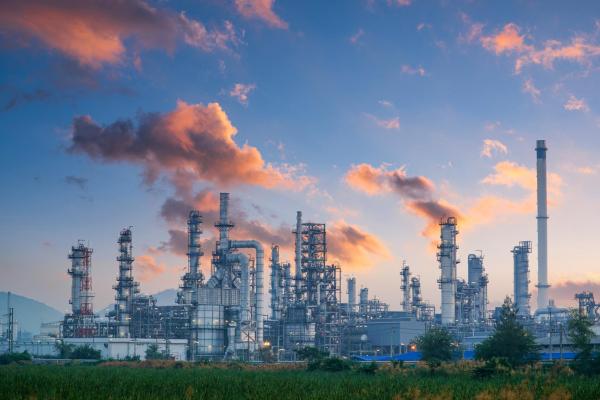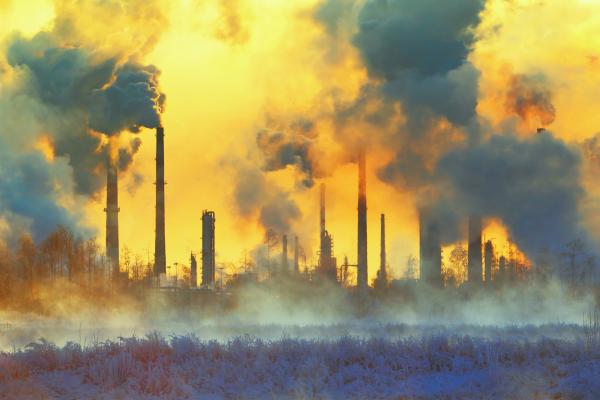Overview
A large share of Europe's pollution stems from industrial production processes, including the emission of air pollutants, wastewater discharge and waste generation.
The revised Industrial and Livestock Rearing Emissions Directive (Directive 2010/75/EU or ‘IED 2.0’) as amended by Directive 2024/1785, is the main EU instrument to reduce these emissions into air, water and land, and to prevent waste generation from large industrial installations and intensive livestock farms (pig and poultry).
The latest rules will help promote innovation in new and emerging technologies and foster material efficiency and decarbonisation by encouraging greener practices. This will help large European industries meet the EU's zero pollution ambition by 2050.
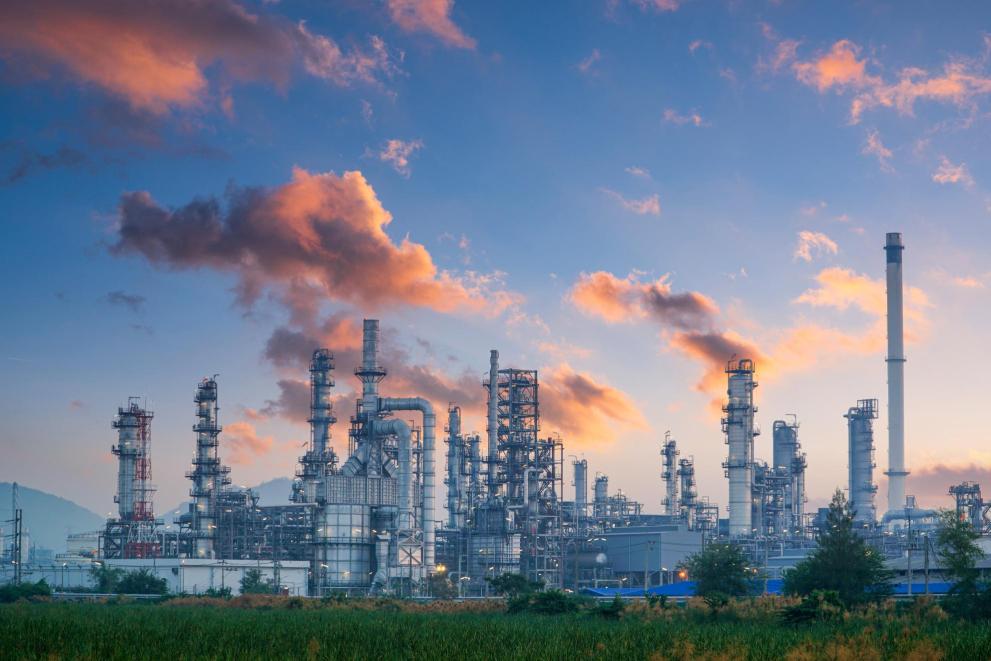
Objectives
The overall aim of the IED 2.0, which entered into force on 4 August 2024, is to minimise the impact of pollution on people’s health and the environment by reducing harmful industrial and intensive livestock emissions across the EU.
The IED's key objectives are to:-
- Promote innovation and transformation through the most effective viable emissions reduction techniques.
- Tighten rules on reducing emissions with stricter emissions limit values and more stringent conditions on granting derogations.
- Streamline permitting via the new Industrial Emissions Portal Regulation which will enhance access to environmental data.
- Provide new and stronger tools for the circular economy and resource efficiency, as well as reduce the use of hazardous chemicals.
- Cover more activities to reduce unregulated emissions (mining of metal, manufacturing of batteries, waste landfills, and more intensive pig & poultry farms).
- Enhance the rights of the public by strengthening and broadening public information, participation and access to justice, as well as allowing people to seek compensation for damages to their health caused by illegal pollution.
How does the IED 2.0 work?
Under the IED 2.0, environmental permits are granted to the concerned installations and farms by national permitting authorities.
Best available techniques (BAT) play a key role. These techniques are the most environmentally effective and economically and technically viable for the prevention and control of emissions.
BATs are generally identified sector-by-sector through the collaborative, transparent and fact-based Sevilla Process, managed by the European Commission’s Joint Research Centre (JRC). This identification process results in BAT Reference Documents (BREFs), which help form BAT Conclusions (BATCs). BATCs are implementing decisions adopted by the Commission that are the basis for drafting permit conditions by Member States' permitting authorities.
Permits must also contain binding quantitative resource efficiency requirements for materials, water and energy, as appropriate, to better address water scarcity challenges and waste generation.
To ensure compliance, harmonised environmental inspections take place on site at least every one to three years by competent authorities, depending on the risks of the concerned activities.
Promoting innovation and transformation
A new Innovation Centre for Industrial Transformation and Emissions (INCITE) will gather information on innovative pollution control solutions and transformative technologies, helping to speed up their development.
Flexibilities in permits will allow frontrunners to test and deploy emerging techniques and will facilitate deep industrial transformation. Industries will further need to develop transformation plans, describing how their installations will progress towards decarbonisation, zero pollution, and the circular economy.
Enhanced public rights and enforcement
Under the IED 2.0, accountability has increased significantly.
The public now has better access to environmental data through the new Industrial Emissions Portal Regulation (IEPR), in line with the Aarhus Convention and the right to participate in decision-making on IED permits.
For the first time, EU environmental law establishes the right for people to seek compensation for damages to their health caused by illegal pollution.
The penalties regime is enhanced with strengthened financial fines for the worst infringements (at least 3% of the legal person's annual EU turnover). More powers are also granted to competent authorities to suspend non-compliant installations.
Provisions for large combustion plants
Large Combustion Plants (LCPs) are responsible for a large amount of emissions of air pollutants. This is why the IED contains special provisions for LCPs. The IED and its special provisions related to LCPs have achieved significant reductions in LCP pollutant emissions in recent years.
The Directive sets the minimum requirements for certain pollutant emissions from LCPs, including:-
- Aggregation rules
- Emission limit values
- Monitoring and compliance assessment
More information on emissions and energy use in LCPs in Europe can be found on the European Environment Agency’s webpage on indicators of emissions to air from LCPs.
Information on annual emissions from LCPs and other industrial sources is also available through the Industrial Emissions Portal.
Farming under the IED 2.0
The revised legislation covers the largest and most polluting intensive pig and poultry farms in the EU, which amounts to 30% of pig and poultry farms. This is key in helping to reduce nitrogen pollution in the air, water and soil.
However, the new obligations do not apply to small and medium-sized pig and poultry farms, which represent 70% of pig and poultry farms in the EU. Organic pig farming is excluded from the scope of the directive.
A new simplified system covering both permitting and reporting is introduced. It allows for a simple registration of farms, instead of having them subject to individual permits. Also, the concerned farms are not required to draw up an environmental management system, as is the case for large industrial installations. Member States can report emissions on behalf of farmers, reducing the burden on the individual farm.
New Operating Rules, aiming to reduce emissions and improve resource efficiency, will be adopted by the Commission within two years of entry into force of the IED 2.0. These rules will be defined through a transparent and inclusive process, involving the sectors concerned, experts from the Member States and NGOs.
The concerned farmers will have a long transitional period to adapt, as the new Operating Rules will become applicable at the earliest between 2030-2032, depending on the size of the farm.
Cattle farming
By the end of 2026, the Commission will publish a report with solutions to more comprehensively address the emissions from the rearing of livestock, in particular cattle. The sector represents about 50% of total EU methane emissions and about 25% of total EU ammonia emissions.
The report will also assess the feasibility of action to ensure that imported livestock products do not pollute more than those produced in the EU.
Implementation
The first implementation phase of the revised IED – from today to 2030 – consists of developing and implementing a new regulatory environment aimed at supporting the industrial transformation. This includes identifying BAT requirements for newly covered activities, such as the mining of metals, waste landfills and battery gigafactories.
Establishing the Innovation Centre for Industrial Transformation and Emissions (INCITE) will be key in the initial implementation stage. It will help to identify how close industrial sectors are to having the necessary transformation technologies by publishing a scoreboard rating.
A launch event for INCITE was held in Sevilla on June 21. Details can be found here.
Several bodies also support the implementation of the Industrial Emissions Directive by EU Member States.
Article 13 of the Industrial Emissions Directive requires the Commission to organise an exchange of information between various actors: Member States, the Commission, industries concerned, and NGOs promoting environmental protection and human health. The aim is to draw up, review and, where necessary, update BREFs.
To this end, the Commission has established a formal expert group forum through a Commission decision. See the Expert Group Register website for the IED Article 13 forum.
The Commission obtains and makes publicly available the opinion of the forum on the proposed content. The Commission takes this into account when adopting the BAT conclusions.
For more information on the activities of the forum:
According to Article 75 of the Directive, the Commission must be assisted by a committee. This committee has the competence to deliver opinions on implementing acts including BAT conclusions. The Committee operates in accordance with the examination procedure (Article 5 of Regulation (EU) No 182/2011). After a positive opinion on draft implementing decisions, these are adopted by the Commission and published in the Official Journal. All finalised BREFs and adopted BAT conclusions can be accessed here.
To facilitate the exchange of experience and good practice concerning the interpretation, transposition and implementation of the IED, and to advise the Commission during the preparation of delegated acts, Member State experts meet in the Industrial Emissions Expert Group (IEEG). The IEEG operates in an informal setting without any formal rules of procedure. See information on meetings of the IEEG.
This platform has been set up to provide a space for Member States and representatives from the competent authorities to discuss, exchange knowledge and experience, and access resources related to the implementation of the IED. The platform can be accessed here.
In case of questions, please contact IED_Implementation Ricardo [dot] com (IED_Implementation[at]Ricardo[dot]com).
Ricardo [dot] com (IED_Implementation[at]Ricardo[dot]com).
The Commission has:
- Adopted a Communication on the elaboration of baseline reports
- Established implementing rules on the determination of start-up and shut-down periods
- Established implementing rules on transitional national plans
- Established implementing rules on reporting on environmental performance in refineries
- Established implementing rules for Member State reporting
- Made available a summary of answers given to implementation questions
Timeline
Key dates related to the Industrial Emissions Directive.
- 4 August 2024Revised Industrial and Livestock Rearing Emissions Directive (IED 2.0) enters into force
- 12 April 2024EU Council votes in favour of revised IED agreement
- 12 March 2024European Parliament votes in favour of revised IED agreement
- 28 November 2023Political agreement reached between European Council and Parliament on revised IED
- 4 April 2022Commission proposal for a revision of the IED
- 2010Industrial Emissions Directive enters into force
Main laws: Industrial and Livestock Rearing Emissions Directive (IED 2.0), Industrial Emissions Directive 2010 (IED), Industrial Emissions Portal Regulation (IEPR)
Evaluation:Commission Staff Working Document & Executive Summary
Impact assessment:SWD/2022/111 & Executive Summary
Reports: 2017 Implementation Report; 2021 Implementation Report; Animal Rearing and Combustion Plants Emissions Control Review; Animal Rearing and Combustion Plants Emissions Control Report (2013); Report on Exercise of Power to Adopt Delegated Acts (2015); Report on Exercise of Power to Adopt Delegated Acts (2020)
Q&A: Revised EU rules on Industrial Emissions & Factsheet
Leaflets, studies, and compelling reports on industrial emissions can be found here, as well as our factsheet & IED 2.0 story.
Related topics: Air, Chemicals, Plastics
Related strategies: Chemicals Strategy, Circular Economy Action Plan, Environment Action Programme to 2030, Plastics Strategy, Textiles Strategy, Zero Pollution Action Plan
Related Commission priorities: European Green Deal



